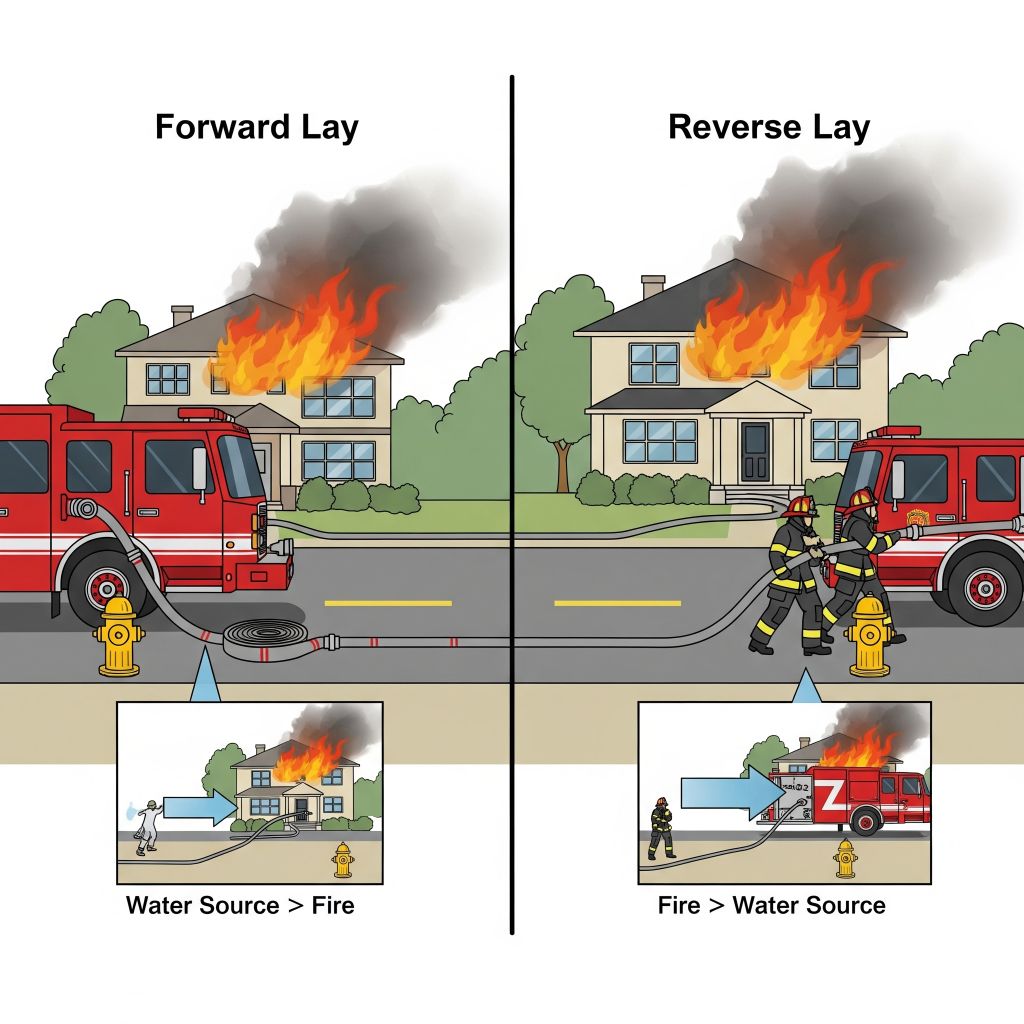
When it comes to understanding the nuances of forward lay vs reverse lay, it’s crucial to grasp the subtle yet significant distinctions between the two techniques. As a seasoned expert in the field, I’ve delved deep into the intricacies of these laying methods to provide you with a comprehensive breakdown. Let’s unravel the mystery behind these contrasting approaches and uncover the key disparities that set them apart.
In this insightful article, I’ll walk you through the fundamental disparities between forward lay and reverse lay, shedding light on their distinct characteristics and applications. With my expertise guiding you, you’ll gain a clear understanding of how these techniques diverge and when to employ each one for optimal results. Stay tuned as we explore the world of laying strategies and unravel the mystery behind forward lay vs reverse lay.
Key Takeaways
- Forward Lay vs. Reverse Lay: Understanding the differences between Forward Lay and Reverse Lay is crucial for effective cable laying techniques.
- Key Disparities: Recognize the disparities in starting points, twisting of the cable, tension, and strain between Forward Lay and Reverse Lay methods.
- Advantages and Disadvantages of Forward Lay: Efficiency, reduced twisting, and consistent tension are benefits of Forward Lay, while limited terrain flexibility and higher strain on the cable are its drawbacks.
- Advantages and Disadvantages of Reverse Lay: Reduced risk of cable damage, enhanced flexibility, and mitigation of twisting are advantages of Reverse Lay, while potential for increased tension and limited efficiency in certain terrains are its disadvantages.
- Empowering Decision-making: Grasping the nuances empowers informed decisions for optimal efficiency, safety, and performance in cable laying projects.
🚒 Forward Lay vs Reverse Lay: Comparison Table
| Feature | Forward Lay | Reverse Lay |
|---|---|---|
| Definition | Laying hose from the hydrant to the fire | Laying hose from the fire scene to the hydrant |
| Initial Stop | Pumper stops at hydrant first | Pumper stops at fire scene first |
| Hose Deployment | Supply hose is laid out while engine drives forward | Supply hose is laid while engine drives in reverse |
| Water Supply Setup | Hydrant connection is established first | Attack line setup occurs first |
| Best Use Case | When hydrant is near arrival point | When attack must begin immediately at the fire |
| Advantages | – Fast water source- Ideal in urban areas | – Quick attack setup- Good for long driveways or rural setups |
| Disadvantages | – Delay in attack line deployment | – Delay in establishing water supply |
| Common in | Departments with hydrants near roadways | Departments prioritizing rapid attack over supply |
| Driver Role | Lays hose while driving toward fire | Lays hose while driving away from fire |
| Requires Additional Unit? | Often no | Often yes (e.g., second unit connects hydrant) |
Understanding Forward Lay and Reverse Lay
When it comes to cable laying techniques, understanding the disparities between forward lay and reverse lay is crucial. Let’s dive into the distinctions between these two methods:
- Forward Lay involves positioning the cable reels with the outer end at the start of the laying process.
- Reverse Lay, on the other hand, starts with the inner end of the cable reel at the beginning.
In Forward Lay, the cable is unwound in the same direction as the laying process, simplifying the operation. Conversely, Reverse Lay requires twisting the cable during unreeling, which can add complexity to the process.
Both techniques have their advantages and ideal applications based on factors such as cable type, terrain, and project specifications. With a clear understanding of these differences, you’ll be equipped to make informed decisions when selecting the most suitable laying method for your project.
Remember, choosing the right laying technique is crucial for ensuring efficiency, safety, and optimal cable performance in various installations.
Key Differences Between Forward Lay and Reverse Lay
When comparing Forward Lay and Reverse Lay techniques in cable laying, several crucial discrepancies stand out that can impact project efficiency and cable performance:
- Starting Point: In Forward Lay, I begin unwinding the cable from the outer end of the reel, following it by laying it in the same direction. On the other hand, Reverse Lay commences from the inner end of the reel, requiring a twisting motion during unreeling.
- Twisting of the Cable: One of the primary distinctions lies in the twisting of the cable during the unreeling process. Forward Lay simplifies this as twisting is not necessary, aligning with the laying direction. In contrast, Reverse Lay introduces complexity due to the inherent twisting required as the cable is unspooled.
- Tension and Strain: The applied tension and strain on the cable vary between the two methods. Forward Lay typically experiences less tension and strain during installation due to the consistent unwinding and laying direction. Conversely, Reverse Lay may subject the cable to higher tension and strain levels as a result of the twisting action during unreeling.
- Efficiency and Safety: Understanding these key differences is vital in ensuring the efficiency and safety of cable laying operations. Factors such as cable type, terrain conditions, and project specifications play a significant role in determining whether Forward Lay or Reverse Lay is more suitable for a specific installation.
Grasping the nuances between Forward Lay and Reverse Lay empowers me to make informed decisions tailored to the unique requirements of each cable laying project, ultimately enhancing efficiency, safety, and overall performance.
Advantages and Disadvantages of Forward Lay
Advantages:
- Efficiency: Forward Lay technique is known for its efficiency in unreeling cables smoothly, leading to a streamlined laying process.
- Reduced Twisting: With Forward Lay, there is minimal twisting of the cable during unreeling, which helps maintain the integrity of the cable.
- Consistent Tension: This technique allows for more consistent tension along the cable, reducing the risk of overloading or underloading.
- Limited Terrain Flexibility: Forward Lay may face challenges in certain terrains where bends and curves are present, impacting the laying process.
- Higher Strain on Cable: In some cases, Forward Lay can impose higher strain on the cable due to the pulling direction, requiring careful monitoring of tension levels.
- Risk of Cable Damage: The lack of flexibility in maneuvering the cable during Forward Lay can pose a risk of damage if not executed with precision.
Advantages and Disadvantages of Reverse Lay
When it comes to cable laying techniques, reverse lay is another option that offers its own set of advantages and disadvantages. Let’s dive into the details:
Advantages:
- Reduces the risk of cable damage: By unreeling the cable in the opposite direction, reverse lay can minimize the chances of damage, especially in challenging terrains with bends.
- Enhances flexibility: This technique provides greater flexibility, allowing for smoother installation in areas where maneuverability is critical.
- Mitigates twisting: Unlike forward lay, reverse lay helps in reducing twisting of the cable, ensuring a more uniform orientation during the laying process.
- Potential for increased tension: Due to the nature of unreeling in the opposite direction, reverse lay may introduce higher tension on the cable, which could impact its longevity.
- Risk of uneven tension: In certain conditions, maintaining consistent tension throughout the installation process can be more challenging with reverse lay, leading to potential issues.
- Limited efficiency in certain terrains: While reverse lay excels in some aspects, it may not be as efficient as forward lay in terrains with specific challenges, such as sharp bends or obstacles.
Understanding the advantages and disadvantages of reverse lay is crucial for project planning and execution, as it allows for informed decisions that align with the specific requirements of the cable laying operation.
Conclusion
The Reverse Lay technique offers distinct advantages such as minimizing cable damage and improving flexibility, especially in challenging landscapes. However, it comes with its own set of challenges, including increased tension on the cable and potential efficiency limitations in certain terrains.
Understanding these nuances is crucial for making informed decisions when choosing between Forward Lay and Reverse Lay methods based on specific project requirements. By weighing the pros and cons of each technique, project planners can optimize cable laying strategies to ensure successful installations in diverse environments.
Here’s a Forward Lay vs Reverse Lay comparison in table form, followed by detailed FAQs to help you understand both techniques used in fireground operations:
🔥 Forward Lay vs Reverse Lay – FAQs
❓1. What is a forward lay in firefighting?
➡️ It’s a hose deployment method where the engine drops supply hose at the hydrant first, then drives toward the fire, laying hose behind it.
❓2. What is a reverse lay in firefighting?
➡️ In a reverse lay, the engine stops at the fire scene, drops attack lines and personnel, then drives in reverse (or backs up) toward the hydrant, laying supply hose.
❓3. When should a forward lay be used?
➡️ Use a forward lay when the hydrant is before or near the fire location and quick water supply is more critical than immediate fire attack.
❓4. When is a reverse lay more effective?
➡️ A reverse lay is preferred when immediate fire suppression is needed, or the hydrant is farther away, especially in rural or large commercial areas.
❓5. Does reverse lay require more firefighters?
➡️ Typically yes. A second firefighter or unit may be needed to connect to the hydrant after the engine leaves the scene.
❓6. Which method is faster for fire attack?
➡️ Reverse lay gets attack lines set up faster at the fire scene, while forward lay is faster for establishing a continuous water supply.
❓7. Are both methods taught in firefighter training?
➡️ Absolutely. Both are essential skills in Firefighter I and II training, and their use depends on department protocols and scene assessment.
❓8. Is one method safer than the other?
➡️ Not necessarily. Safety depends on execution and the scene setup. However, improper reverse lays can delay water supply if not coordinated well.
❓9. Which method is used in wildland firefighting?
➡️ Forward lays are more common in wildland operations due to long distances, progressive hoselays, and mobile attack strategies.
❓10. Can forward and reverse lays be combined?
➡️ Yes. Some fire scenes may require hybrid approaches, especially on large or complex incidents involving multiple apparatus and zones.
Would you like a 1000+ word illustrated article on this topic with real-life scenarios and tactics used by departments?
